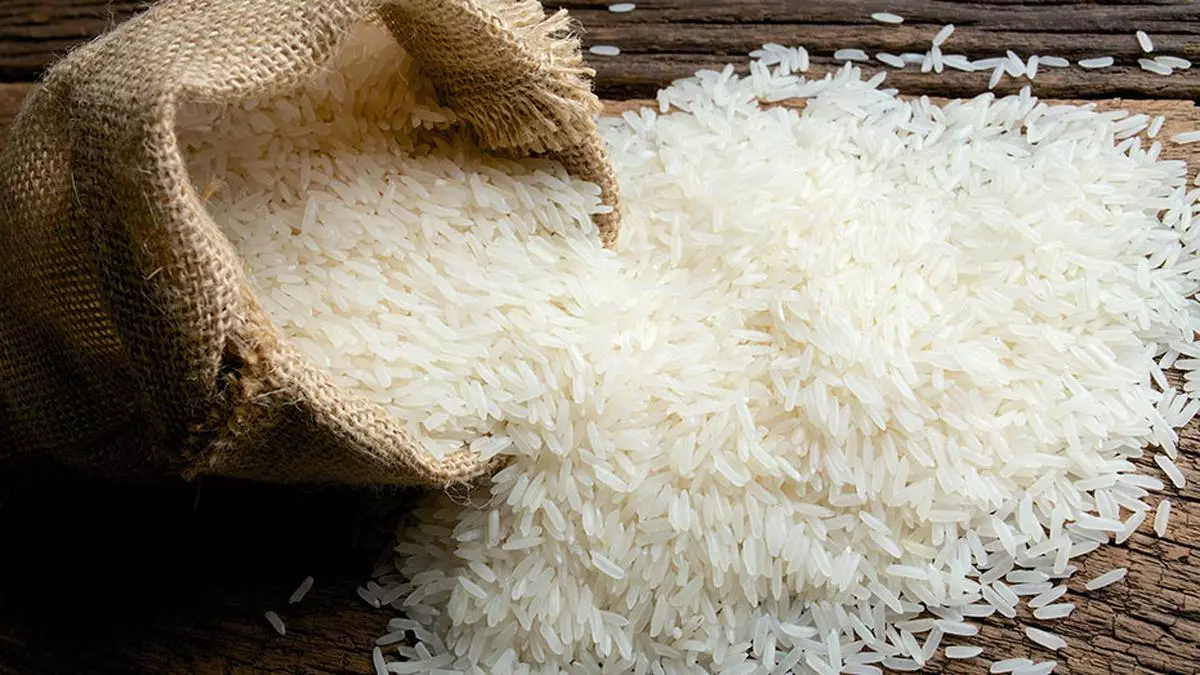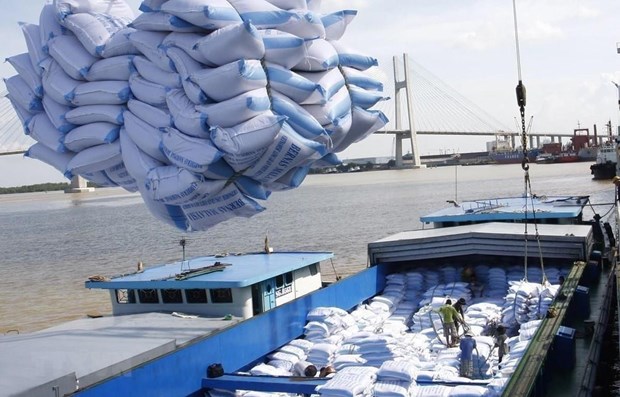Tags
Diversifying from Rice to Alternative Crops in Southeast Asia

It will be a tall order to effectively switch from rice to substitute grains but Southeast Asia owes it to its future generations to build up food security and crop resilience in the face of a changing climate.
“It’s not a meal without rice” is a common saying in Southeast Asia. Southeast Asians receive 76 per cent of their caloric intake from rice and rice is embedded in the region’s culture and traditions. Ninety-nine per cent of all cereal production within the region comprises rice and corn.
Rice is vulnerable to climate change. Rice yields in Southeast Asia are projected to drop by as much as 50 per cent by 2100 (from 1990 levels) due to floods, droughts, and heat waves. Furthermore, rice production contributes nearly 2 per cent of global greenhouse gas emissions, is water intensive, vulnerable to pests and diseases, and long-term monoculture has resulted in soil degradation.
Rice has not always been the dominant staple in Southeast Asia – in the past, many communities’ diets consisted of a range of seasonal grains. Rice’s ascendency stemmed from the region’s governments implementing pro-rice policies to improve food security, including subsidies for seeds, fertiliser, facilitated go-to-market infrastructure and others. Over time, these policies have dissuaded or prohibited farmers from diversifying their crops.
Historically, native staples have included sorghum and millet, and roots such as cassava, taro, and yam. For example, fox millet was co-cropped with rice in Vietnam 4,000 years ago; taro and yam were common in diets as well. Sorghum and millet were found to be common in Indonesia prior to European contact. Many of these still feature in traditional cuisines but often as side dishes.
For its food security, Southeast Asia should return to a diversity of grains, to not be solely dependent on rice. Of the various native staples, millets, cassava, and sorghum have greater tolerance to drought and heat, are high in nutrients, with some varieties even considered as “superfoods”. They are ideal for crop rotation, which contributes to soil health and reduces the need for chemical inputs. Diet diversification also contributes to nutritional diversity. While rice is a significant source of carbohydrates, it is deficient in some essential nutrients and can be supplemented by other grains (see Table 1). Diversification could reduce incidences of malnutrition, especially among vulnerable populations.
Table 1: Comparisons of nutrient content of various grains, with benefits above those of rice in bold.
| Content per 100 grams (g) | ||||
| Rice | Pearl Millet | Sorghum | Cassava | |
| Calories (cal) | 360 | 363 | 332 | 146 |
| Carbohydrates (g) | 78.9 | 67 | 73 | 34.7 |
| Protein (g) | 6.8 | 11.8 | 11 | 12 |
| Calcium (mg) | 6 | 42 | 28 | 33 |
| Iron (mg) | 0.8 | 11 | 4.4 | 0.7 |
| Vit B1 (mg) | 0.12 | 0.38 | 0.38 | 0.06 |
Sources: Faqih et al. 2020; Ullah et al 2017
Millet is a highly drought-tolerant grass species that can grow in poor soils and harsh growing conditions without requiring high levels of fertiliser and pesticide. It produces a seed grain high in proteins, potassium, and vitamin B, and is considered a healthier alternative to rice. In recognition of its advantages, the FAO designated 2023 as the “Year of the Millets”. India, the world’s largest millet producer, served millet at the recent G20 Leaders’ Summit gala dinner to highlight its culinary range. In Southeast Asia, Myanmar is the largest producer of millet (and fourth largest in the world) and millet is grown in smaller quantities in many Southeast Asian countries. Currently, due to its status as a superfood, millet costs almost double that of rice or wheat; prices could drop if supply is increased.
The other crop highlighted in the G20 Leaders’ Summit Declaration for its climate resilience was sorghum. Sorghum is tolerant to saltwater intrusion, arid conditions, and temperature fluctuations. Like millet, sorghum has extensive root systems that help with soil erosion, moisture retention, and nutrient replenishment. It can be used as a wheat flour replacement or for animal feed. Sorghum is currently a major crop in the Americas and Africa but it is used almost exclusively for feed and bioethanol in developed countries. In the region, Indonesia is already expanding its sorghum cultivation to reduce dependency on imported wheat.
The last of the climate-resilient crops is cassava, which can withstand drought and acidic infertile soils. Cassava is rich in calories and vitamin C. The plant is used not only for food but also as animal feed and in paper, textiles, and biofuels. The production of cassava can be integrated into agroforestry and soil conservation practices. From the region, Thailand, Indonesia, Vietnam, and Cambodia are the third, sixth, seventh and ninth-largest cassava producers globally, covering 3.5 million hectares.
Despite their known benefits, production of alternative staples in Southeast Asia is still low (see Table 2). Other potential alternatives include taro, yam, and quinoa.
For its food security, Southeast Asia should return to a diversity of grains, to not be solely dependent on rice.
Table 2: Staple grains production in major agriculture nations in Southeast Asia
| Rice | Millet | Sorghum | Cassava | |
| Country | 2021 (million metric tons, mMT) | 2021 (metric tons, MT) | ||
| Cambodia | 11.4 | Not available (NA) | NA | 7,722,226 |
| Indonesia | 54.4 | NA | 15,000 | 17,749,000 |
| Laos | 3.9 | NA | NA | 2,885,716 |
| Malaysia | 2.4 | NA | NA | 31,246 |
| Myanmar | 24.9 | 240,000 | 250,000 | 394,602 |
| Philippines | 20.0 | NA | 598 | 2,559,812 |
| Thailand | 33.6 | NA | 50,000 | 30,108,352 |
| Vietnam | 43.9 | 2,107 | NA | 10,565,589 |
Source: FAOSTAT
Multiple strategic efforts are required to realise the full potential of alternative grains. On the supply side, it requires providing market access, incentives, infrastructure, agronomic research to improve the resilience of crop varieties, and capability development. However, demand is equally if not more important. Farmers and the market will not participate without buyers. This requires concerted efforts to create greater demand. Governments and farmers should also be careful to avoid unnecessary forest clearance or environmental degradation in the pursuit of rice substitutes.
Past efforts for rice diversification have not been successful. Indonesia’s campaign in the 1970s contradicted the government’s rice self-sufficiency campaign and mantra that meals with rice were a sign of prosperity. Indonesia revived the rice diversification campaign in 2009 to encourage residents to go a day or a meal without rice; however, farmers were not incentivised to increase production in other staples so rice still dominated. In Singapore in the late 1960s, despite extensive advertising to encourage consumption of cheaper wheat, rice was still prevalent as it was easier to prepare.
Outside of Southeast Asia, India is currently campaigning for consumption of millets and Nepal is also considering supporting similar efforts. The Indian government has taken steps to tout millet’s health benefits and increase incentives for its production.
Rice will likely remain the dominant staple in Southeast Asia for some time, even as the region continues to face the threats of climate change. It will become increasingly important to adapt and diversify staple food sources to build resilience and ensure the well-being of future generations. Embracing alternative staples, particularly if they can be palatably processed to replace rice in the rice cooker, can be a transformative step towards a more sustainable and food-secure Southeast Asia, without sacrificing its rich cultural and culinary traditions.
https://fulcrum.sg/diversifying-from-rice-to-alternative-crops-in-southeast-asia/Published Date: October 31, 2023







